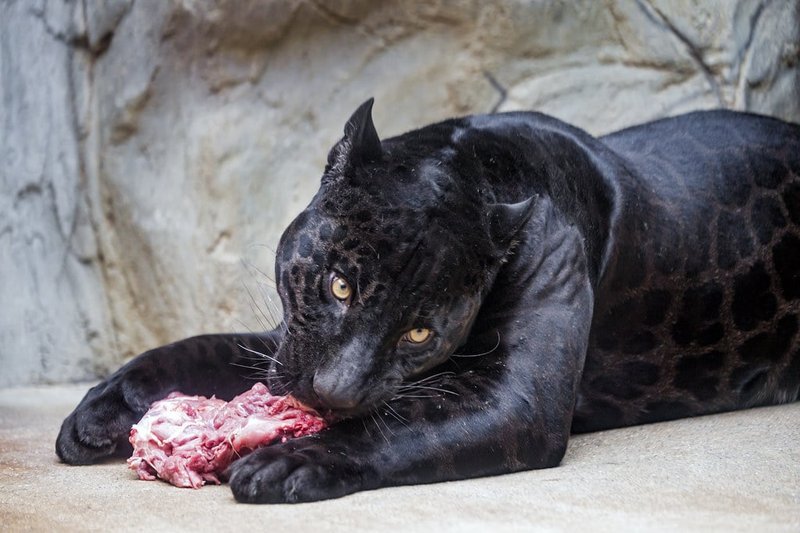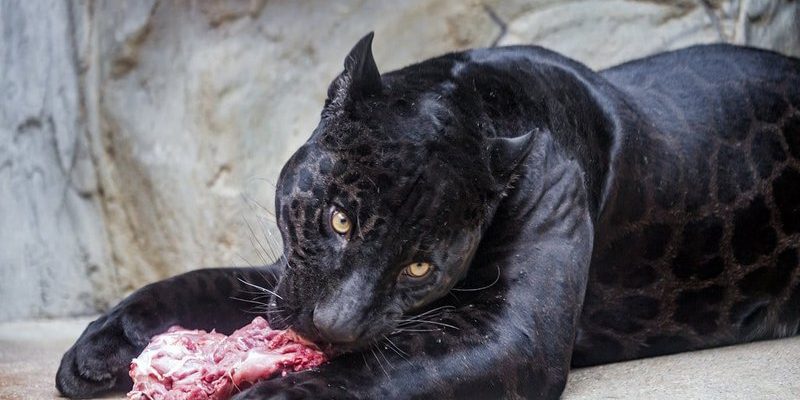
Panthers are known for their stealthy movements and agile bodies, making them one of the most efficient predators in their ecosystems. They primarily thrive in various habitats, from dense forests to wetlands, showcasing their adaptability. Let’s dive deeper into what makes their diet and hunting methods so fascinating.
What Do Panthers Eat?
Panthers, particularly the Florida panther, have a diet that is primarily carnivorous. They are opportunistic feeders, meaning they’ll eat whatever is available and easiest to catch. This includes a variety of prey, such as:
- Deer
- Wild hogs
- Small mammals
- Birds
- Reptiles
Their diet can vary significantly based on seasonal changes and local animal populations. For instance, during certain times of the year, deer might be more abundant, while in others, smaller mammals might be the main source of food. Panthers are also known to scavenge when necessary, taking advantage of remains left by other predators.
You might be wondering how this impacts their health. A diverse diet helps panthers maintain a balanced nutrient intake. Just like how we need different foods to stay healthy, panthers rely on variety to keep their energy levels up and support their physical needs. This adaptability is crucial for their survival, especially in the face of habitat loss and changing ecosystems.
The Hunting Techniques of Panthers
Panthers are stealthy hunters, employing a range of techniques that highlight their physical prowess. Think of them as skilled athletes preparing for a competition. They use their keen senses to locate prey, relying heavily on sight and hearing. Once they’ve spotted a target, their approach is all about patience and precision.
Stalking is the primary method panthers use. They move slowly and quietly, often utilizing the cover of vegetation to get as close to their prey as possible. This technique is akin to a game of hide and seek, where the panther’s goal is to get as close as possible without being detected.
When they’re finally in close range, they’ll unleash their speed in a powerful sprint to catch their prey. This burst of energy is quick and efficient—just like a sprinter bolting from the starting line. Panthers can leap up to 20 feet to catch their prey, making them formidable in the chase.
The Role of Camouflage in Hunting
Camouflage plays a vital role in the hunting strategies of panthers. Their dark fur allows them to blend seamlessly into their surroundings, particularly in forested or shadowy areas. Imagine wearing the perfect outfit to blend in at a costume party—you want to be unnoticed until it’s time to make your move.
This natural disguise helps them stalk unsuspecting prey without giving away their position. The patterns in their fur break up their outline, making it harder for both prey and potential threats to spot them. It’s an evolutionary gift that enhances their hunting success.
Additionally, panthers often hunt during twilight hours, known as dusk or dawn. This time of day provides the perfect lighting for their stealthy pursuits. The combination of low light and their fur allows them to be nearly invisible, enhancing their chances of a successful hunt.
Social Behaviors and Hunting Collaboration
While panthers are primarily solitary hunters, there are instances when they may collaborate with other panthers, particularly during mating seasons or when raising young. This teamwork can be compared to a duo of chefs working together in a kitchen.
During these social interactions, panthers might work together to corner prey, leveraging each other’s strengths. However, these collaborations are rare, as panthers typically prefer to hunt alone. Their solitary nature allows them to control their territory and manage their own food supply without competition.
That said, young panthers often learn vital hunting techniques from their mothers before venturing out on their own. This mentorship is key for their survival, teaching them how to stalk, ambush, and ultimately take down prey.
The Impact of Environment on Diet and Hunting
The environment plays a significant role in shaping the diet and hunting behaviors of panthers. Different habitats offer varying prey availability, which directly affects their hunting strategies. For instance, in areas with abundant deer populations, a panther’s diet will naturally lean towards deer.
Here’s the thing: habitat loss due to human activities can disrupt these natural patterns. When panthers lose their habitats, they face challenges in finding food, which can lead to declining populations. Conservation efforts are crucial in preserving their habitats, ensuring that panthers can continue to thrive in their ecosystems.
Moreover, changes in climate can influence prey migration patterns, further complicating how panthers hunt. Adapting to these shifts is essential for their survival, as they must be able to adjust their strategies based on new circumstances.
Challenges Faced by Panthers
Despite their prowess, panthers face numerous challenges in the wild. One of the biggest threats comes from human encroachment on their habitats. Roads, urban development, and agriculture can fragment their territory, making it harder to find food and mate.
Additionally, the decline of prey populations—due to hunting, habitat destruction, and climate change—puts pressure on panthers. Imagine trying to cook a meal with only a few ingredients—it’s not easy, right? Similarly, when food sources are limited, panthers struggle to survive.
Conservation efforts aim to educate the public and protect these beautiful creatures. By supporting initiatives that preserve their habitats and promote biodiversity, we can help ensure that panthers continue to thrive.
The diet and hunting strategies of the panther reveal a fascinating blend of skill, adaptability, and survival instinct. From their stealthy stalking techniques to their remarkable camouflage, panthers are truly masters of their craft. Understanding these aspects not only deepens our appreciation for them but also highlights the importance of conserving their habitats and the ecosystems they inhabit.
Honestly, it’s up to all of us to ensure that future generations can witness these incredible animals in action. By promoting awareness and supporting conservation efforts, we can help protect the panther and its way of life, ensuring that these majestic creatures continue to roam the forests and wetlands for years to come.

